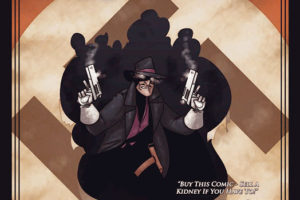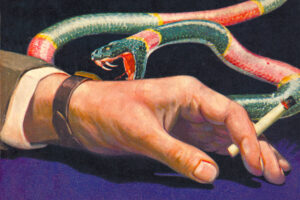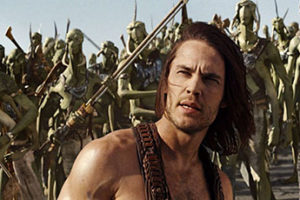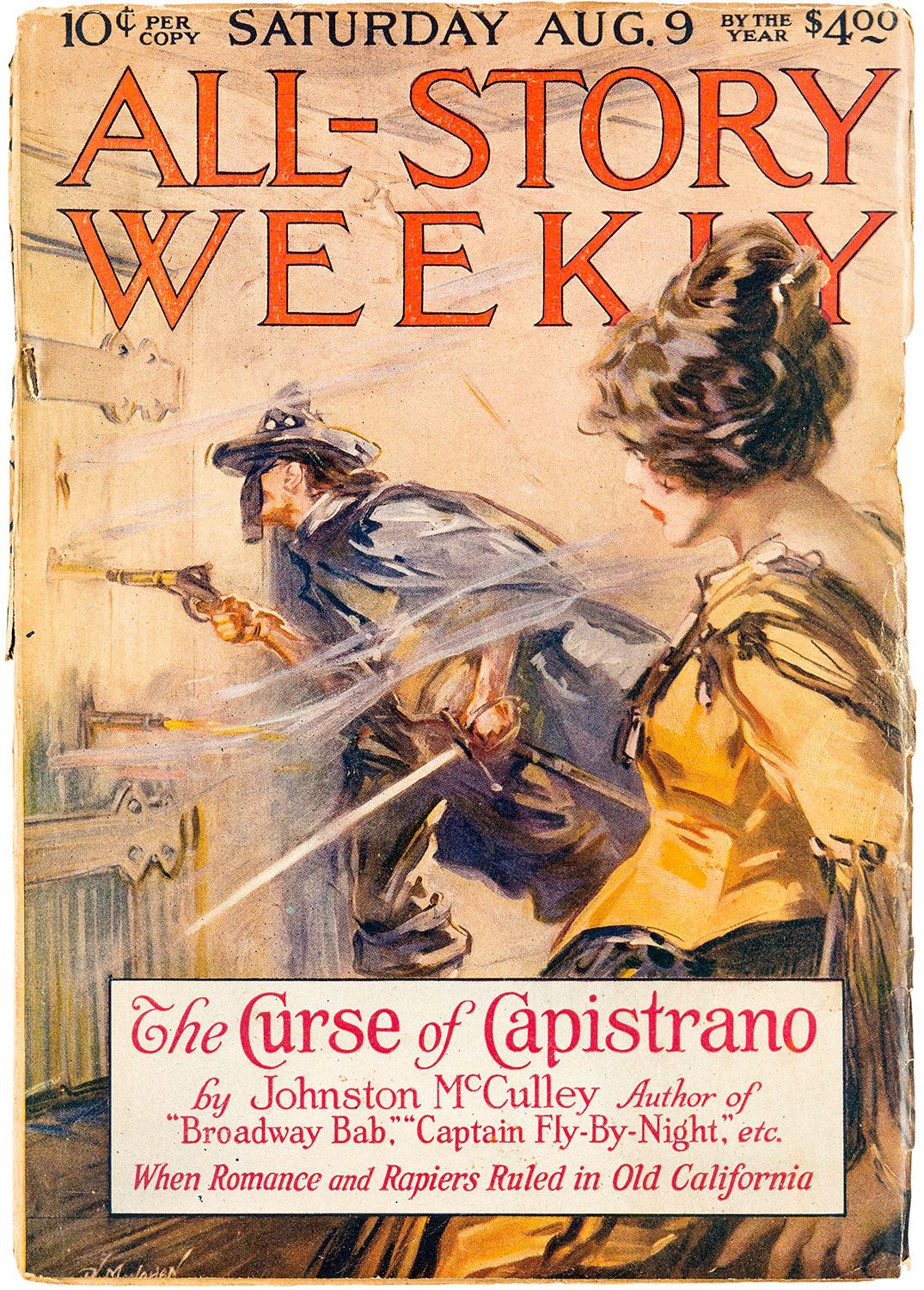 Among the best known of pulp characters within the mainstream is Johnston McCulley‘s Zorro. though this is more due to the fame created by his appearance in movies and TV shows then in the original written form. McCulley (1883-1958) created several larger-than-life characters, many of which were part of series that ran sometimes in the dozens. Zorro was not his first serial character, and in fact was not created as a serial character!
Among the best known of pulp characters within the mainstream is Johnston McCulley‘s Zorro. though this is more due to the fame created by his appearance in movies and TV shows then in the original written form. McCulley (1883-1958) created several larger-than-life characters, many of which were part of series that ran sometimes in the dozens. Zorro was not his first serial character, and in fact was not created as a serial character!
While I think most people know who Zorro is, just in case let’s do a quick run down. Zorro, Spanish for “fox,” operated in old Spanish California. He is really Don Diego Vega, who lives with his widowed father in a large hacienda.
When government officials and their soldiers turn tyrannical, he creates the identity of Zorro, using his sword and acrobat skills, along with his horse to fight them and defend the common folk. He avoids detection by pretending to be an idle playboy, a fop (same as the Scarlet Pimpernel). His deaf-mute manservant knows his identity. There is also a love interest he tries to protect. Over the years, there are slightly different takes on this both in the stories and various media adaptions.
McCulley created Zorro in the novel “The Curse of Capistrano” that ran serial form in All-Story Weekly in August 1919. It was clearly written as a stand-alone novel, as at the end Don Diego reveals his identity, marries his sweetheart and retires Zorro. And that would have ended things if not for Douglas Fairbanks, who discovered the novel and saw it as a vehicle for his next movie. This he did in The Mark of Zorro in 1920, the first of many movies that would follow.
McCulley would not follow up with a new novel until “The Further Adventures of Zorro” in Argosy in 1922!
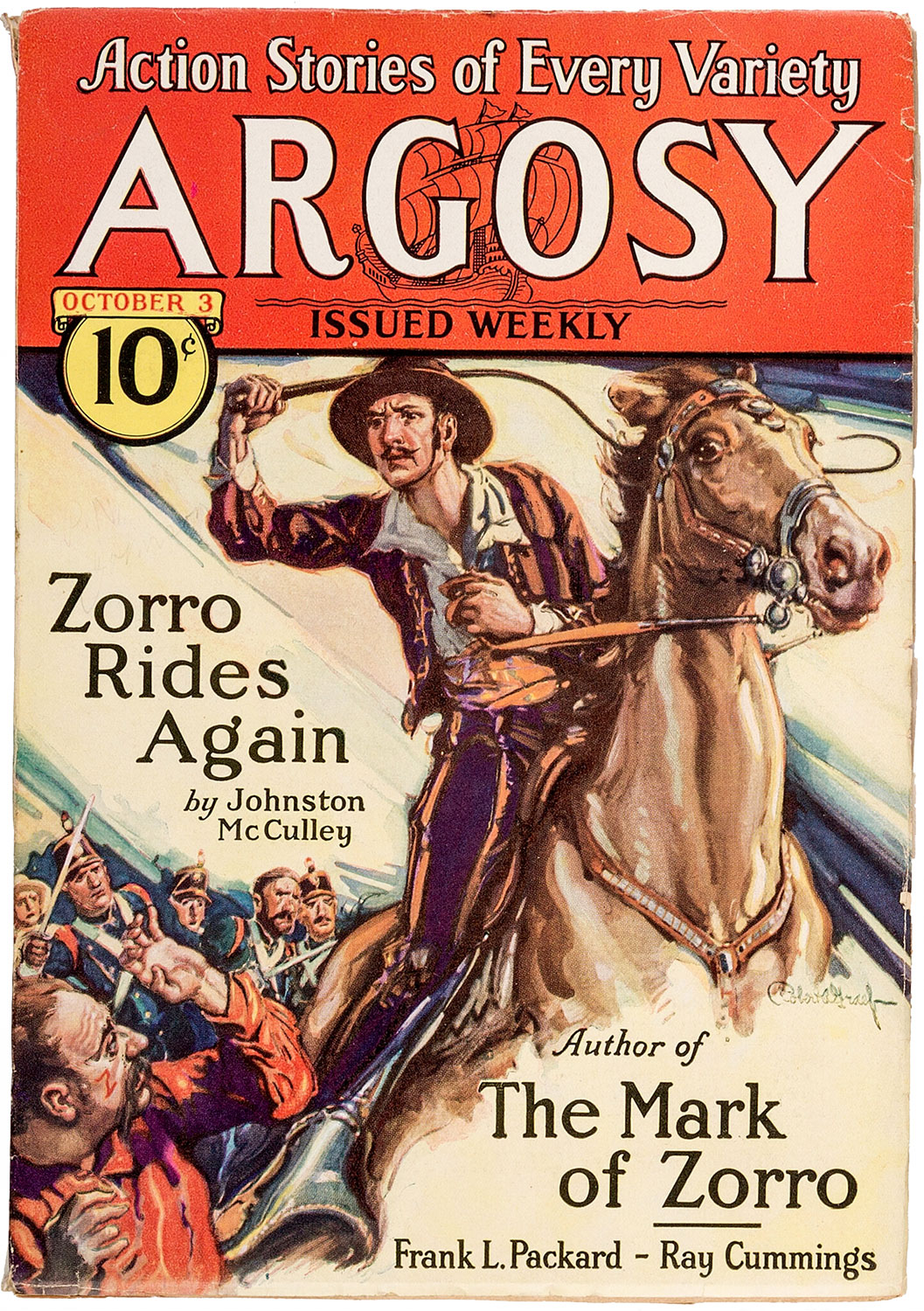 Next was “Zorro Rides Again” in 1931 in Argosy. Then for the next few years we’d get about one story a year in Argosy until 1935. Another novel in 1941. And finally in West Magazine starting in 1944, we’d get a series of over 50 short stories until 1951. A couple of more stories followed in other mags, one coming out posthumously.
Next was “Zorro Rides Again” in 1931 in Argosy. Then for the next few years we’d get about one story a year in Argosy until 1935. Another novel in 1941. And finally in West Magazine starting in 1944, we’d get a series of over 50 short stories until 1951. A couple of more stories followed in other mags, one coming out posthumously.
Now, if you wish to read the original stories, your best option is the six-volume set from Bold Venture Press. They are licensed from Zorro Productions, the owner of not just Zorro but other McCulley works still under copyright.
The early stories and novels are spread over the first four volumes, then the stories from West are contained in volumes 3 through 6.
In addition, each volume has additional articles. In volume 1, we learn about Zorro’s California and adapting Zorro into that first movie. Volume 2 has an intervew with McCulley. Volume 3 has an article on the movie serials. Volume 4 looks at Zorro collectibles. Volume 5 looks at unusual Zorro collectibles and movies from other countries. And volume 6 provides an intro by mystery author Max Allan Collins and afterward by series editor and publisher Rich Harvey.
In addition to this set, Bold Venture has put out an authorized anthology of new Zorro stories and two (so far) new novels.
Movies and movie serials
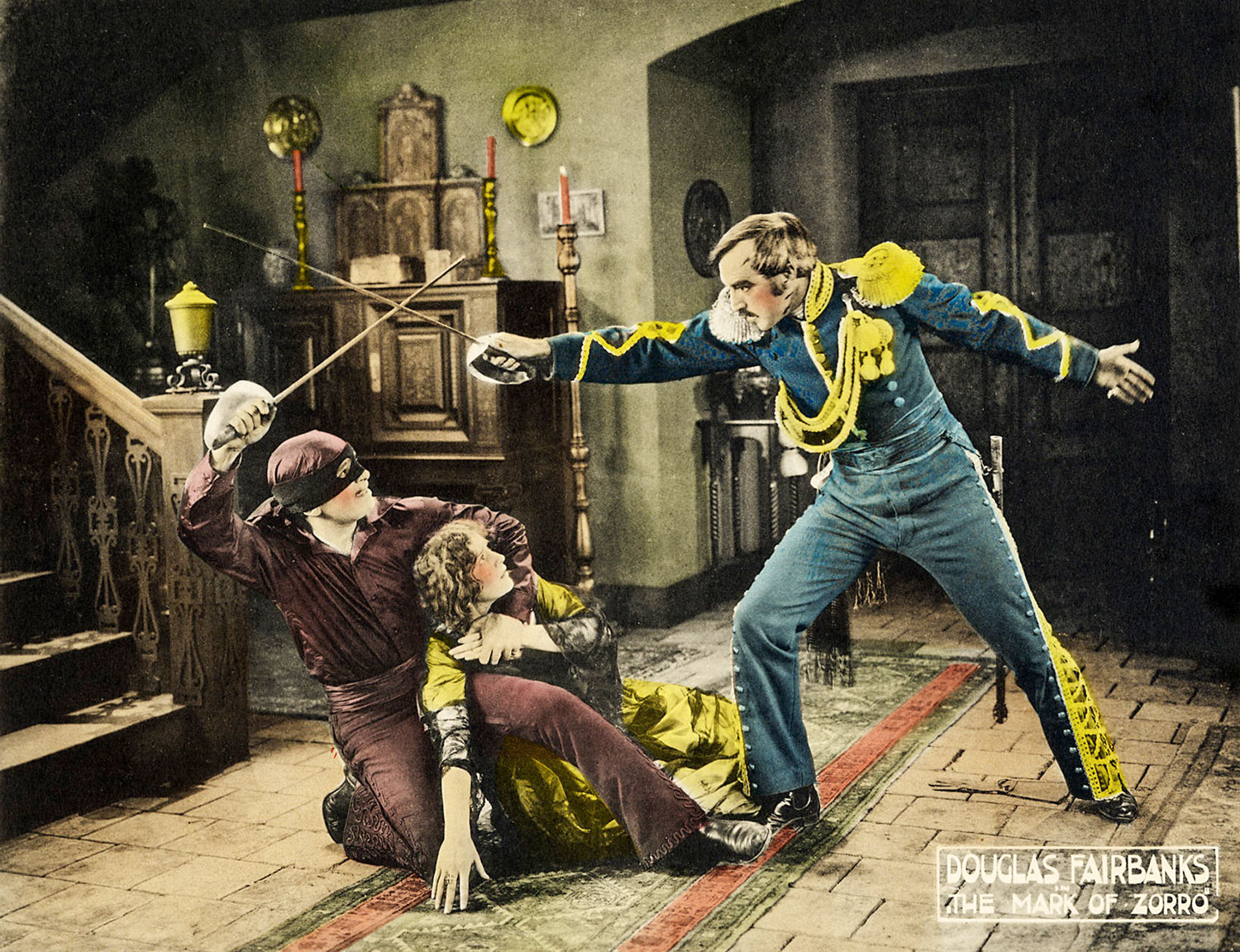 It was probably the movies (and, later, TV) that brought Zorro to the mass audience. And there have been several movies and serials over the years. I’m not going to try to mention them all.
It was probably the movies (and, later, TV) that brought Zorro to the mass audience. And there have been several movies and serials over the years. I’m not going to try to mention them all.
The first two Zorro movies where from Douglas Fairbanks: The Mark of Zorro (1920) and Don Q, Son of Zorro (1925).
The classic Zorro movie for many folks is the 1940 The Mark of Zorro, with Tyrone Powers as Zorro and Basil Rathbone, who played many swashbuckling villains, as the main villain Capt. Pasquale. Notable is that Rathbone was actually a master swordsman. This is my favorite movie version, and I’ve seen it several times.
In 1981, there was a parody version, Zorro, the Gay Blade, with George Hamilton as Diego Jr., who has succeeded his father. When he is injured, his long-unknown twin brother, Ramon, takes his place. I remember enjoying it when it came out, but I haven’t seen it since.
Most modern audiences probably know Zorro through the two Antonio Banderas movies, Mask of Zorro (1998) and Legend of Zorro (2005). But Banderas is actually a bandit who is trained in the first film by an aging Don Diego, played by Anthony Hopkins, to be his successor. I’m not sure why they couldn’t just have Banderas be Diego instead.
There were a few movie serials, but some had descendants of Zorro. One had a son, another a grandson, and yet another had a Civil War-era descendant.
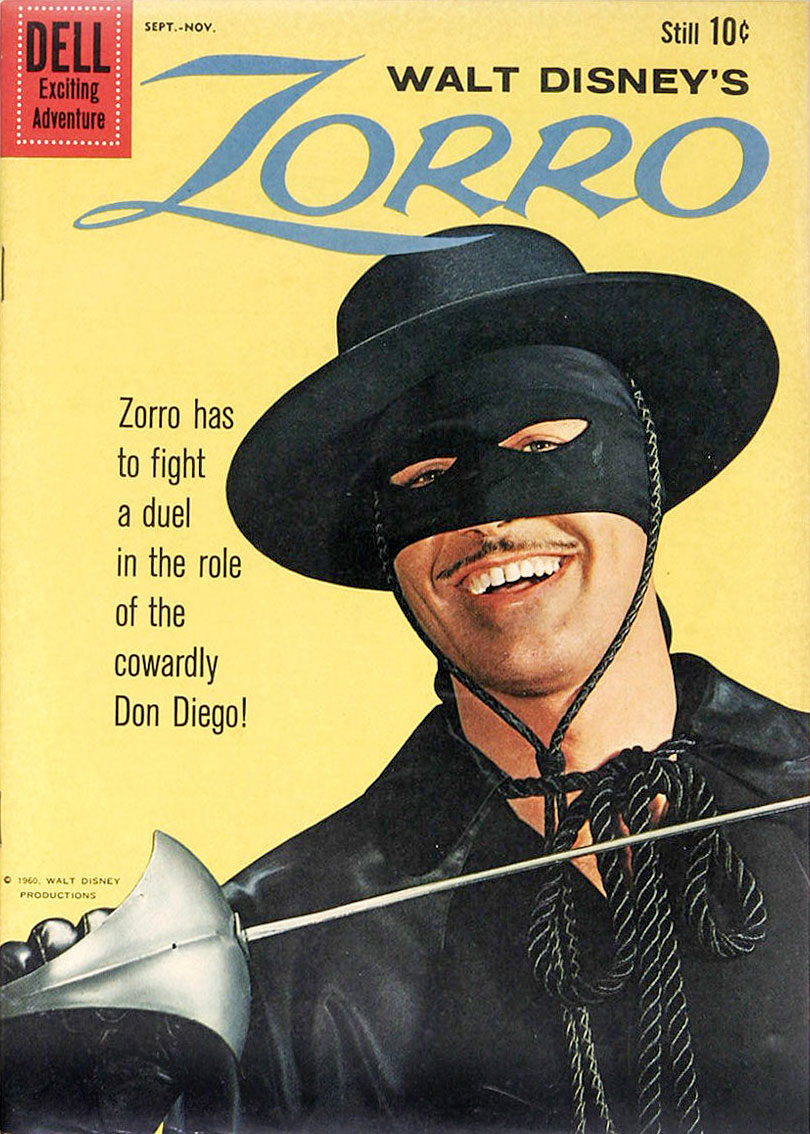 TV
TV
If it wasn’t movies, then for most people, it was probably one of the several Zorro TV series. Most well-known may be the 1950s Disney TV series staring Guy Williams. It was in syndication for years after that, and Disney put out other tie-in materials, kicking off a Zorro resurgence. In the 1990s, there was another well-regarded series on The Family Channel.
In addition, there were several animated series, but I don’t recall them.
Comics
Comics were another area Zorro was in. Dell Comics did several one-off comics before working with Disney to put out a tie-in comic with the TV series with artwork by Alex Toth. I remember reading the reprints of these and enjoyed them. There are a couple of reprints of these works.
In recent years, there have been several Zorro comic series by a few different publishers. Some of these also teamed up Zorro with several other characters, such as in Dynamite‘s Masks series. To be honest, I’ve not really bothered with these.
So from that humble start as a pulp character, Zorro has become a multi-media phenomenon worldwide. This shows the power of pulp characters if they are used well.
What was your introduction to Zorro? Was it a version in the comics, movies, or TV? Which one is your favorite version?

